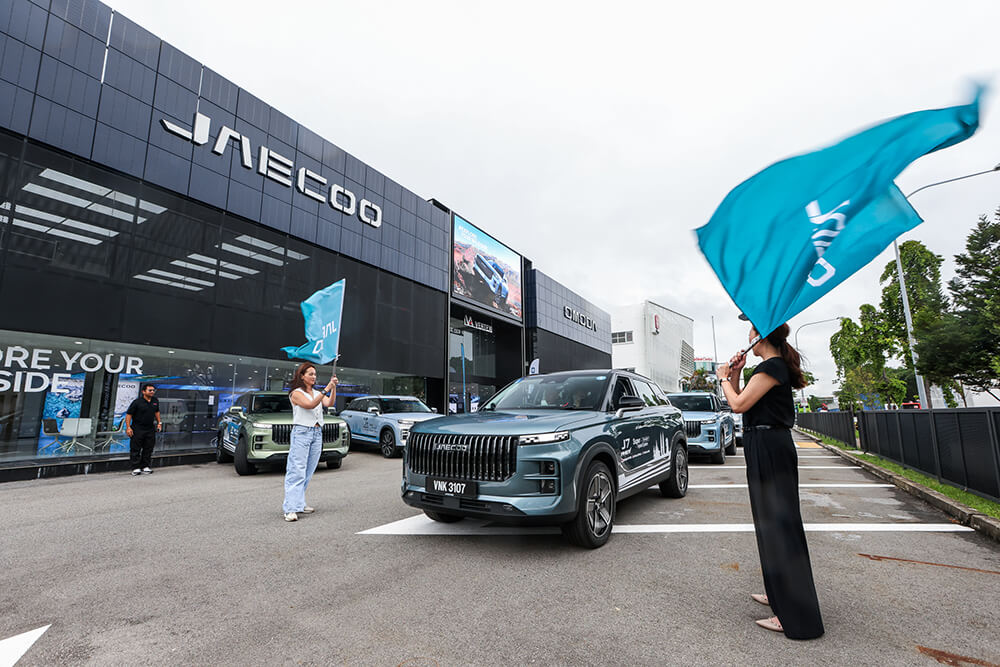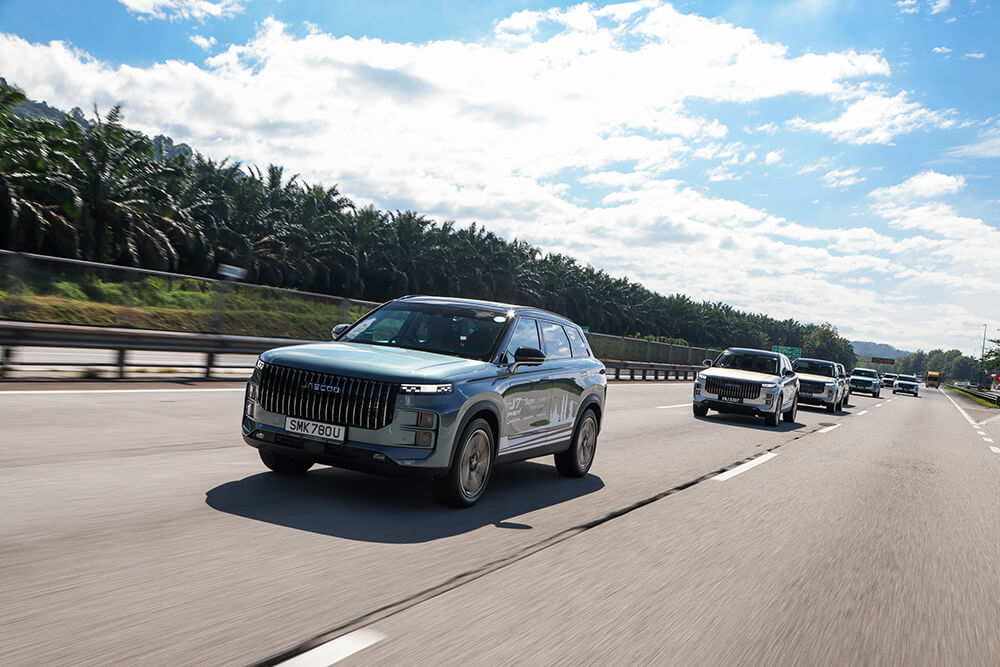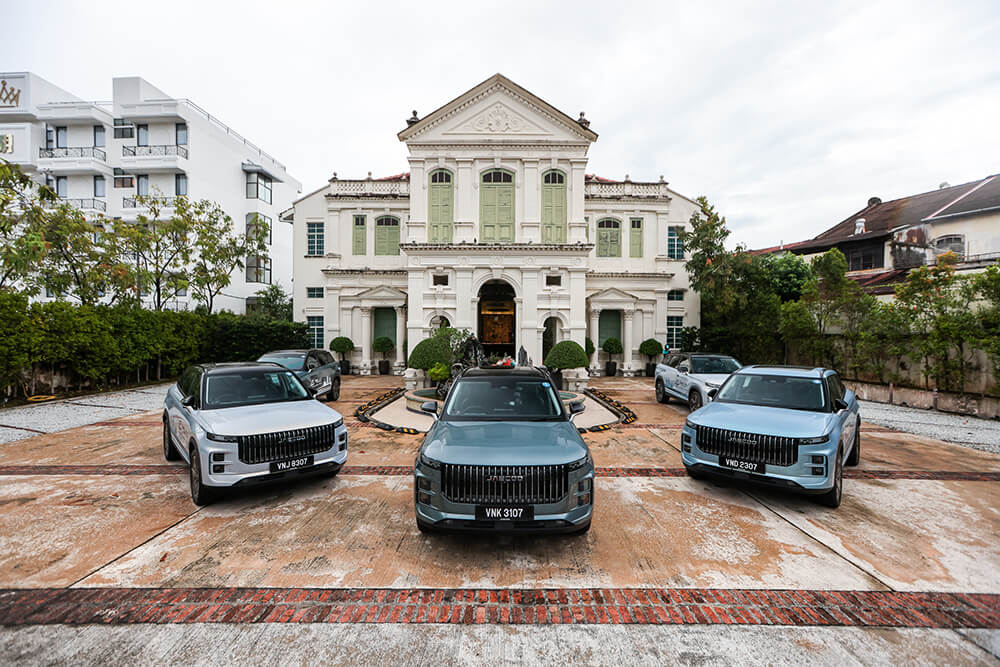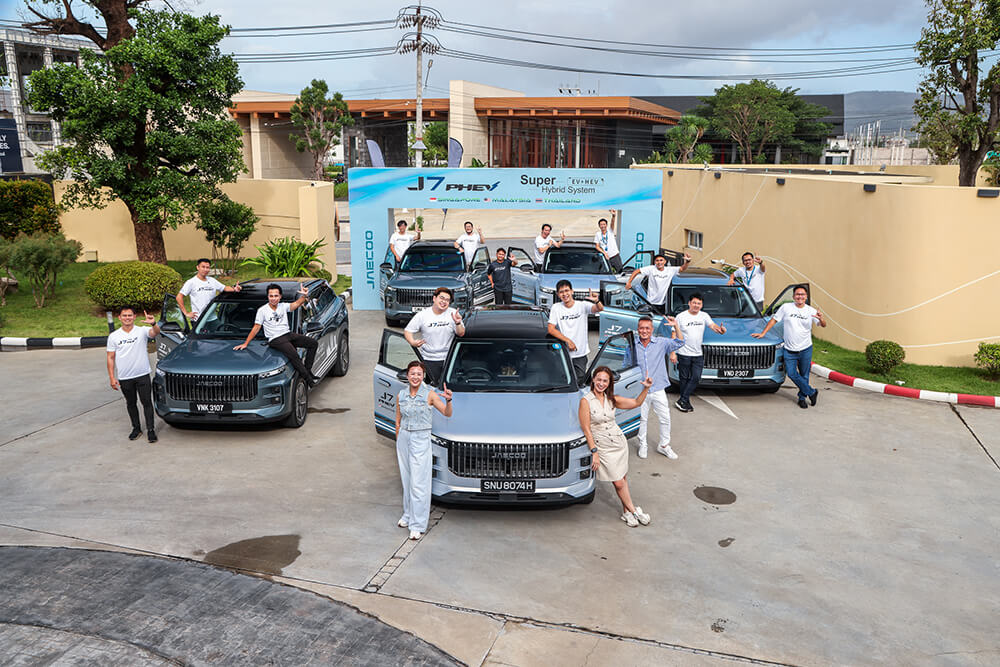Record-breaking Fuel Economy and Range Reaffirms Compatibility of Hybrid Engine for Malaysian Market
Five JAECOO J7 Plug-in Hybrid Vehicles (2WD) embarked on a journey from Singapore, through Malaysia to Hatyai, Thailand, recently to test the limits of the PHEV’s range. The long-distance course resulted in all five vehicles surpassing the 1,200km *WLTP range, with the longest range recorded at 1,427.5km. The WLTP range is the maximum distance an EV will travel on a single charge, based on a standardised test.

Photo 1: (Left flag-bearer) JAECOO Malaysia Vice President, Emily Lek, flagging off the contingent of five JAECOO J7 PHEVs which ventured across the Singapore, Malaysian and Thailand borders.
"We are incredibly proud to finally demonstrate the JAECOO J7 PHEV's performance to the local market. It has truly exceled when put to the test during the course of this journey, a testament to the JAECOO brand promise of delivering best-in-class vehicles. In addition to being the only PHEV with a direct current (DC) charging capability, our Super Hybrid System technology is the first in its class here in Malaysia. We are excited for our customers to enjoy the benefits of the JAECOO J7 PHEV very soon," said JAECOO Malaysia Vice President, Emily Lek.
Following the three-nation long-haul drive, the JAECOO J7 PHEV surpassed its specifications by covering a distance of 947km purely on petrol and achieving a purely electric range of 108km, 18km more than its specifications. The drive also tested the JAECOO J7 PHEV’s fuel consumption which resulted in 3.5L/100km, surpassing its standard of 6.6L/100km.

Photo 2: JAECOO believes the J7 PHEV engine meets the market's demand for better fuel economy and uncompromising engine performance
The performance of the JAECOO J7 PHEV is attributed to its Super Hybrid System. Made up of three core components, its comprises fifth generation 1.5TGDI dedicated hybrid engine, a continuously variable dedicated hybrid transmission, and a high-performance dedicated hybrid battery pack. All three components work seamlessly together to deliver high performance, more power and greater savings on fuel and energy.

Photo 3: Set to be launched in Malaysia by February, the JAECOO J7 PHEV is positioned as the only PHEV with a direct current (DC) charging capability and the first in its class in Malaysia to feature JAECOO's Super Hybrid System technology.
Looking to enhance driver confidence and peace of mind, JAECOO's Super Hybrid System is designed with multiple energy replenishment modes. The first is a slow charging option via a 230V three-pin plug home socket which charges the vehicle from 0% to 100% in 8.5hours at 3.3kW. The second, an AC charger with a capability of charging the vehicle from 30% to 80% in three hours at 6.6kW. Finally, its DC charging option is a key differentiator that sets the JAECOO J7 PHEV apart. The brand highlights that it is the only PHEV in the market with a DC fast charging capability, able to produce a battery charge of 30% to 80% from just 20 minutes of charging at 40kW.
Investing in battery quality, design and safety, the JAECOO J7 PHEV is fitted with a specialised hybrid battery with a thermal management system. The battery is made to be impact- resistant owing to its advanced battery armour with an internal shield and external iron-clad structure. Considering dynamic weather conditions, and with safety as its cornerstone, the PHEV’s battery is also designed to performed reliably in extreme temperatures with an IP68 rating and remains fire-resistant even under extreme conditions such as punctures or compression.

Photo 4: All five JAECOO J7 PHEVs surpassed the 1,200KM WLTP range on a single tank and charge, with the best performing vehicle clocking a record-breaking 1,427km.
JAECOO’s intention for the long-haul journey across Singapore, Malaysia and Thailand sought to empower users on the compatibility of PHEV engine for the local market and address interest around range and energy consumption. The JAECOO J7 PHEV, available in the two-wheel drive variant in Malaysia, is set to be officially launched in February 2025.